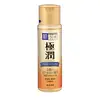What's inside
What's inside
 Key Ingredients
Key Ingredients

 Benefits
Benefits

 Concerns
Concerns

 Ingredients Side-by-side
Ingredients Side-by-side

Water
Skin ConditioningGlycerin
HumectantButylene Glycol
HumectantPetrolatum
EmollientTriethylhexanoin
MaskingParaffinum Liquidum
EmollientPentylene Glycol
Skin ConditioningSorbitan Stearate
EmulsifyingPolysorbate 60
EmulsifyingLanolin
EmollientCeramide EOP
Skin ConditioningCeramide Ns
Skin ConditioningCeramide NP
Skin ConditioningCeramide AP
Skin ConditioningCeramide Eos
Skin ConditioningPhytosphingosine
Skin ConditioningCaproyl Sphingosine
Skin ConditioningDihydroxylignoceroyl Phytosphingosine
Skin ConditioningCholesterol
EmollientBehenic Acid
CleansingZinc Chloride
AntimicrobialPyridoxine Hcl
Skin ConditioningSerine
MaskingOligopeptide-24
Skin ConditioningDimethicone
EmollientAlcohol Denat.
AntimicrobialStearyl Alcohol
EmollientTocopherol
AntioxidantCarbomer
Emulsion StabilisingDisodium EDTA
Melaleuca Alternifolia Leaf Oil
AntioxidantCeteareth-25
CleansingPEG-60 Hydrogenated Castor Oil
EmulsifyingBehenyl Alcohol
EmollientPhenoxyethanol
PreservativeWater, Glycerin, Butylene Glycol, Petrolatum, Triethylhexanoin, Paraffinum Liquidum, Pentylene Glycol, Sorbitan Stearate, Polysorbate 60, Lanolin, Ceramide EOP, Ceramide Ns, Ceramide NP, Ceramide AP, Ceramide Eos, Phytosphingosine, Caproyl Sphingosine, Dihydroxylignoceroyl Phytosphingosine, Cholesterol, Behenic Acid, Zinc Chloride, Pyridoxine Hcl, Serine, Oligopeptide-24, Dimethicone, Alcohol Denat., Stearyl Alcohol, Tocopherol, Carbomer, Disodium EDTA, Melaleuca Alternifolia Leaf Oil, Ceteareth-25, PEG-60 Hydrogenated Castor Oil, Behenyl Alcohol, Phenoxyethanol
Water
Skin ConditioningButylene Glycol
HumectantGlycerin
HumectantPPG-10 Methyl Glucose Ether
Skin ConditioningHydroxyethyl Urea
HumectantSodium Acetylated Hyaluronate
HumectantSodium Hyaluronate
HumectantHydrolyzed Hyaluronic Acid
HumectantHydroxypropyltrimonium Hyaluronate
Sodium Hyaluronate Crosspolymer
HumectantAphanothece Sacrum Polysaccharide
AbsorbentHydrogenated Starch Hydrolysate
HumectantGlycosyl Trehalose
Emulsion StabilisingDiglycerin
HumectantSorbitol
HumectantPentylene Glycol
Skin ConditioningTriethyl Citrate
MaskingCarbomer
Emulsion StabilisingPolyquaternium-51
Skin ConditioningPEG-32
HumectantPEG-75
HumectantAmmonium Acrylates Copolymer
Disodium EDTA
Potassium Hydroxide
BufferingDiethoxyethyl Succinate
SolventDisodium Succinate
MaskingSuccinic Acid
BufferingPhenoxyethanol
PreservativeMethylparaben
PreservativeWater, Butylene Glycol, Glycerin, PPG-10 Methyl Glucose Ether, Hydroxyethyl Urea, Sodium Acetylated Hyaluronate, Sodium Hyaluronate, Hydrolyzed Hyaluronic Acid, Hydroxypropyltrimonium Hyaluronate, Sodium Hyaluronate Crosspolymer, Aphanothece Sacrum Polysaccharide, Hydrogenated Starch Hydrolysate, Glycosyl Trehalose, Diglycerin, Sorbitol, Pentylene Glycol, Triethyl Citrate, Carbomer, Polyquaternium-51, PEG-32, PEG-75, Ammonium Acrylates Copolymer, Disodium EDTA, Potassium Hydroxide, Diethoxyethyl Succinate, Disodium Succinate, Succinic Acid, Phenoxyethanol, Methylparaben
 Reviews
Reviews

Ingredients Explained
These ingredients are found in both products.
Ingredients higher up in an ingredient list are typically present in a larger amount.
Butylene Glycol (or BG) is used within cosmetic products for a few different reasons:
Overall, Butylene Glycol is a safe and well-rounded ingredient that works well with other ingredients.
Though this ingredient works well with most skin types, some people with sensitive skin may experience a reaction such as allergic rashes, closed comedones, or itchiness.
Learn more about Butylene GlycolCarbomer is a polymer of acrylic acid. Its main role is to create a gel consistency.
A high amount of carbomer can cause pilling or balling up of products. Don't worry, most products contain 1% or less of carbomer.
Disodium EDTA plays a role in making products more stable by aiding other preservatives.
It is a chelating agent, meaning it neutralizes metal ions that may be found in a product.
Disodium EDTA is a salt of edetic acid and is found to be safe in cosmetic ingredients.
Learn more about Disodium EDTAGlycerin is already naturally found in your skin. It helps moisturize and protect your skin.
A study from 2016 found glycerin to be more effective as a humectant than AHAs and hyaluronic acid.
As a humectant, it helps the skin stay hydrated by pulling moisture to your skin. The low molecular weight of glycerin allows it to pull moisture into the deeper layers of your skin.
Hydrated skin improves your skin barrier; Your skin barrier helps protect against irritants and bacteria.
Glycerin has also been found to have antimicrobial and antiviral properties. Due to these properties, glycerin is often used in wound and burn treatments.
In cosmetics, glycerin is usually derived from plants such as soybean or palm. However, it can also be sourced from animals, such as tallow or animal fat.
This ingredient is organic, colorless, odorless, and non-toxic.
Glycerin is the name for this ingredient in American English. British English uses Glycerol/Glycerine.
Learn more about GlycerinPentylene glycol is typically used within a product to thicken it. It also adds a smooth, soft, and moisturizing feel to the product. It is naturally found in plants such as sugar beets.
The hydrophilic trait of Pentylene Glycol makes it a humectant. As a humectant, Pentylene Glycol helps draw moisture from the air to your skin. This can help keep your skin hydrated.
This property also makes Pentylene Glycol a great texture enhancer. It can also help thicken or stabilize a product.
Pentylene Glycol also acts as a mild preservative and helps to keep a product microbe-free.
Some people may experience mild eye and skin irritation from Pentylene Glycol. We always recommend speaking with a professional about using this ingredient in your routine.
Pentylene Glycol has a low molecular weight and is part of the 1,2-glycol family.
Learn more about Pentylene GlycolPhenoxyethanol is a preservative that has germicide, antimicrobial, and aromatic properties. Studies show that phenoxyethanol can prevent microbial growth. By itself, it has a scent that is similar to that of a rose.
It's often used in formulations along with Caprylyl Glycol to preserve the shelf life of products.
Water. It's the most common cosmetic ingredient of all. You'll usually see it at the top of ingredient lists, meaning that it makes up the largest part of the product.
So why is it so popular? Water most often acts as a solvent - this means that it helps dissolve other ingredients into the formulation.
You'll also recognize water as that liquid we all need to stay alive. If you see this, drink a glass of water. Stay hydrated!
Learn more about Water